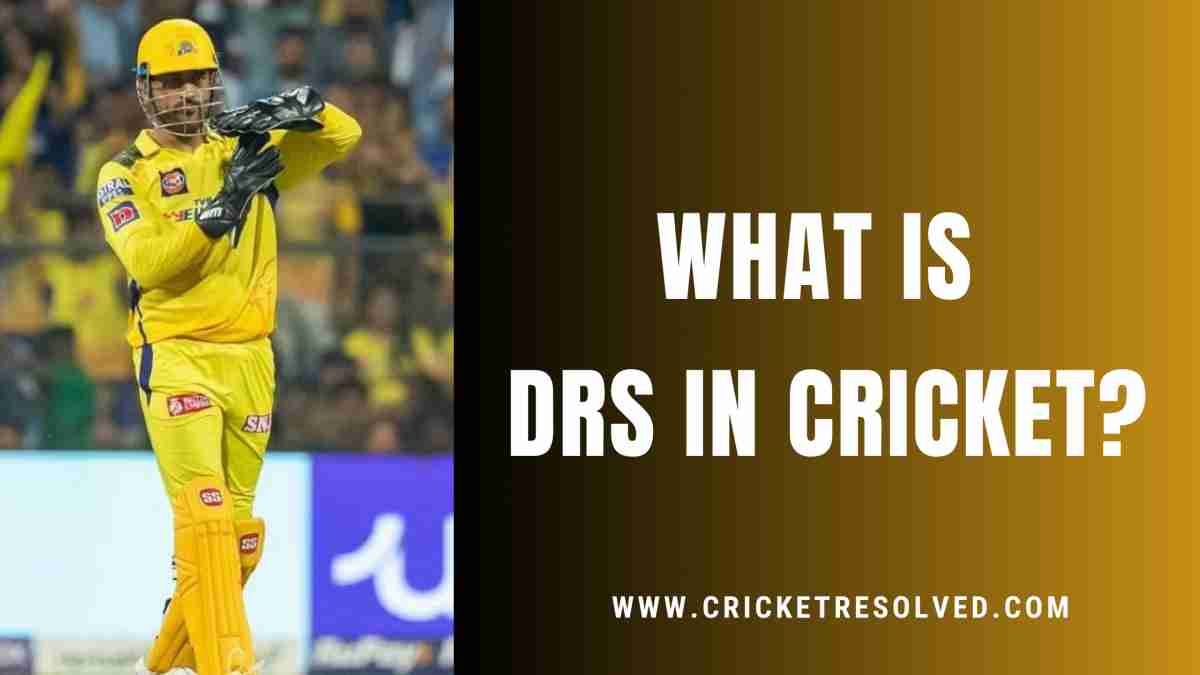
DRS, which stands for Decision Review System, was first used in Test cricket in 2008. It allows players to question decisions made by on-field umpires; for example, a bowling side can appeal a “not out” judgement, and a batter can request a review after being called out.
How can a Team or Player Request a DRS?
Once you grasp what DRS is in cricket, you must understand when and how you can request a player review.
Only after the on-field umpire has made his decision can a team request a DRS. The clock begins to tick immediately since the challenging team has 15 seconds to determine whether or not to accept a review.
To request a review, the fielding team captain or batter in the centre must signal ‘T’ with their hands inside the 15-second interval. The on-field umpire then sends the request to the third umpire.
If the clock runs out, the on-field umpire has the authority to refuse the review request. If the on-field umpires believe the challenging side had help from people off the field, they have the authority to deny the review.
Also Read | Duties of Umpires in Cricket: A Comprehensive Guide
How Many Reviews does a Team have in Test, ODI, and T20I Cricket?
Initially, each team is allowed three unsuccessful reviews per innings in Test cricket and two per innings in ODIs and T20Is. Teams that complete successful challenges can keep the reviews until the end of the game. In Test cricket, reviews from the first inning cannot be carried forward to the second inning.
How does the DRS in Cricket Work?
When the on-field umpire sends the verdict upstairs, the third umpire first determines whether the delivery was fair, that is, if the bowlers overstepped or not. Once it determines that it was a legal delivery, the third umpire proceeds on to other areas of the review, depending on the type of dismissal contested, but the umpire ultimately checks all modes of dismissal.
For example, if the fielding side requests a review of an LBW judgement, the third umpire will first determine if the ball hit or made any contact with the bat. If nothing comes up, he or she proceeds with ball tracking to determine the anticipated course of the ball after it hits the pads.
If the ball is pitched in line or outside off the stumps, makes an impact with the pads in line, and then hits the stump — three reds — only then can the third umpire reverse the verdict of the on-field umpire.
Here’s one more example for you: If a team challenges a caught ruling, the third umpire first uses hotspot and ultra-edge to determine if the ball hit or made contact with the bat. If it made contact, he or she checks to see if the catch was taken clean. If the ball did not edge the bat but instead struck the pads, the third umpire is required to use the LBW procedure to remove all conceivable modes of dismissal.
Remember that this technology has some flaws, and to compensate, the DRS has a vital role in the umpire’s call.
Also Read | 10 Types of Dismissals in Cricket: A Guide
Umpire’s Call in DRS
The International Cricket Council (ICC) added the umpire’s call to the DRS in 2016, encouraging on-field umpires to make decisions and giving them the benefit of the doubt in the case of marginal lbw verdicts.
As a result, if the impact zone where the ball pitched or the predicted ball path as it passes the stumps all return as the umpire’s calls, the on-field umpire’s decision (out or not out) is final. Teams, on the other hand, will not lose their reviews if the umpire’s verdict is factored into the final decision.
What Technologies are Available to the Third Umpire?
Aside from raw footage, three technologies are used in the DRS process.
1. Real Time Snicko (RTS) or Ultra-Edge
Ultra-Edge, commonly known as Real Time Snicko (RTS), generates a waveform representing the soundwave of a linked oscilloscope using a sensitive microphone situated near the stumps. This waveform is then automatically synced with television video to show the sounds as they occurred, with obvious spikes on the waveform indicating contact with the bat or pad.
2. Hot Spot
A hot spot is an infrared imaging device that determines whether or not the ball has made contact with the bat. It necessitates the installation of two infrared cameras on either side of the field, which continuously record footage and make it available to the third umpire. A bright, white patch becomes visible when the ball makes contact with the bat or the batter’s body.
3. Ball Tracking
Ball tracking is used to examine LBW judgements and is typically performed with the computer vision system Hawk-Eye, which is also used in tennis. After a batter is hit on the pad or body, the ball tracking system maps the trajectory of the delivery if it had not been halted, estimating whether or not it would have hit the stumps. Additionally, the system can determine if the bowler struck or pitched the ball in line with the stumps.
Also Read | 7 Interesting Devices Used by Cricket Umpires
Final Thoughts
Cricket has long embraced the use of technology to assist officials, with the DRS becoming a standard element of international and some domestic matches.
The concept was implemented in an attempt to assist on-field umpires in making fewer evident errors by providing batters and bowlers with the ability to dispute decisions that they believe were made incorrectly.




Comments (1)
Explained: Umpire's Call in LBW Reviews - Cricket Resolvedsays:
November 4, 2023 at 11:50 am[…] еnthusiasts oftеn find thеmsеlvеs caught up in thе complеxitiеs of thе Dеcision Rеviеw Systеm (DRS), еspеcially whеn it comеs to LBW situations. Understanding the ins and outs of LBW, including […]